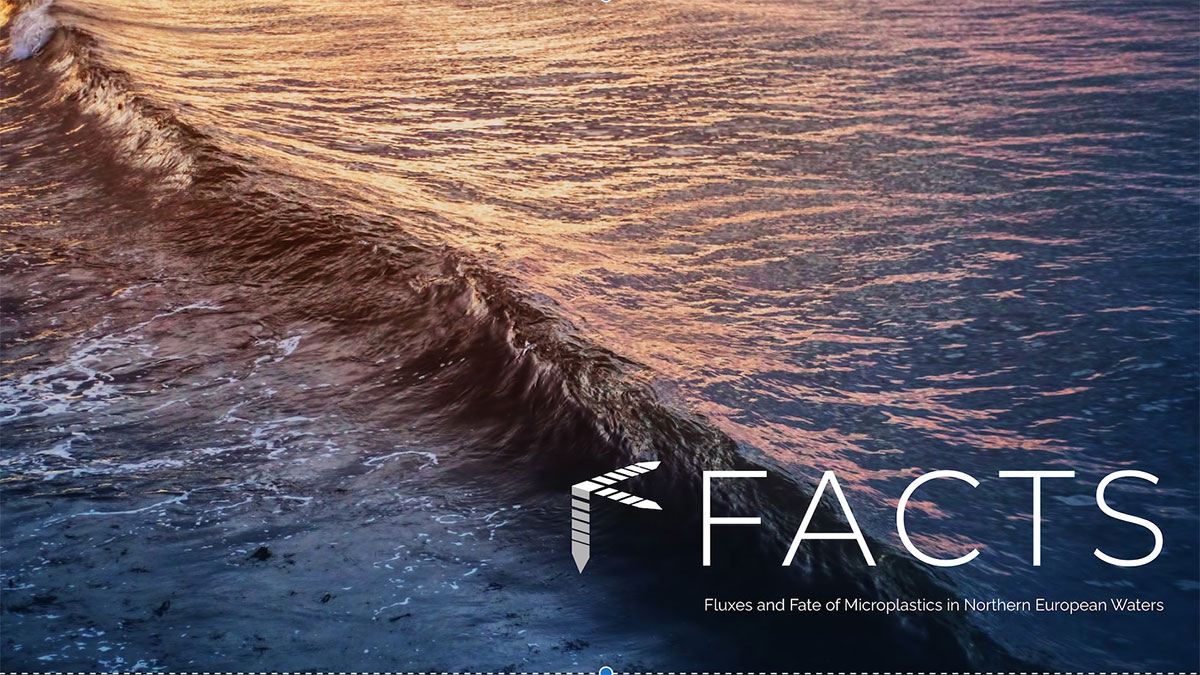Published:

Microplastics and their impact on oceanic eco-systems are one the greatest environmental challenges faced by science.
Now, an international team of marine scientists, including Dr Tony Gutierrez from Heriot-Watt University, are to build on existing knowledge in an effort to better understand where these tiny particles come from, how they are transported and how frequently they enter the oceans.
FACTS: Fluxes and Fate of Microplastics in Northern European Waters, is a project involving a consortium of scientists from academia as well as industry and government, representing 16 partner institutes from across Europe and the United States.
The global plastics pollution crisis has in only the past few years come to the international spotlight, and our oceans, which are the life-support organ of our planet, are at great risk from this.
By using state-of-the-art analytical, monitoring and modelling, the team will explore the sources and sinks of microplastics from the temperate waters of the southern North Sea all the way to the Arctic waters of the Barents Sea. The project will also examine nanoplastics as well as particles that are shed specifically from tyres as little research has been done on this pollution source.
Dr Tony Gutierrez, an Associate Professor of Environmental Microbiology and Biotechnology at the School of Engineering and Physical Sciences, led a study published in 2018 that for the first-time showed nanoplastics can join together, or aggregate, with microorganisms and also 'sticky glue-like' substances in seawater. This work shed new light on how plastic particles may be transported to the seabed and across large expanses of the ocean, as well as providing a critical contribution in understanding their environmental impact.
In the FACTS project, Dr Gutierrez will be investigating the process of micro and nonoplastic aggregation in partnership with the internationally renowned ocean research institute, GEOMAR.
Dr Gutierrez, said: “The global plastics pollution crisis has in only the past few years come to the international spotlight, and our oceans, which are the life-support organ of our planet, are at great risk from this. We know very little of the true volume of plastics in our oceans, especially of the tiniest of plastics (nano- and microplastics) which are invisible. At Heriot-Watt, we will be using conventional and sophisticated microbiological and molecular approaches to investigate the chemical and microbial composition of nano- and microplastic aggregates which we have shown to naturally form, almost spontaneously, in seawater. This information will feed into sedimentation and transport models to help understand where these plastics end up in the oceans in both space and time."
FACTS launched in April and is being led by Denmark’s Aalborg University. The project includes a host of partners including Norwegian Institute of Air research, the National Research Council of Italy and the Institute of Marine Research.
It was recently selected as one of six new projects to receive a share of a €42m funding pot awarded by the Joint Programming Initiative Healthy and Productive Seas and Oceans (JPI Oceans) to advance its research over the next three-years.
Dr Gutierrez added: “The FACTS project brings together an international team to create new knowledge and improve our mechanistic understanding on the sources, transport, occurrence, and fate of small microplastics in temperate waters of the southern North Sea to the Arctic waters of the Barents Sea.
"The project aims to disentangle the contribution of these particles from the array of water masses that exists in the North Atlantic to understand the flow dynamics of these particles, and their quantification in as many sources as possible to allow models to realistically assess the overall transport to other regions such as the Barents Sea.
"The project will be enhanced by tackling the current challenges of nanoplastics and tyre wear particle detection in marine samples. Importantly also, the synthesis of the knowledge from this project will be disseminated to a wide range of stakeholders, ranging from other scientists to European decision makers."
Current estimates claim more than 51 trillion individual pieces of microplastic are today in the world’s oceans, with concentrations exceeding 20 million tonnes in just the top 200 meters of the Atlantic Ocean alone.